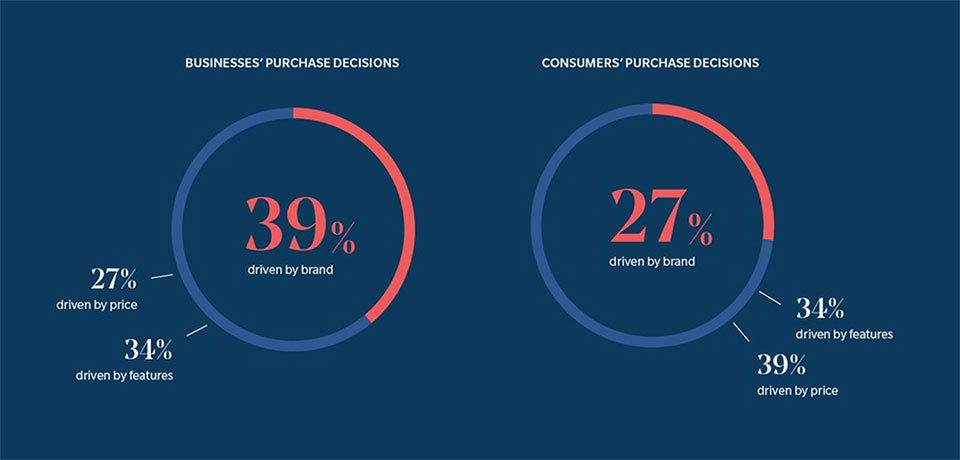By Jennifer Clarke, Director of Customer Experience Strategy, Merkle
B2B marketers have historically spent a lot of time musing about how different their jobs are than those of B2C marketers, but these days it’s the similarities that have become more important to successful customer relationships. Particularly as the COVID-19 pandemic has merged the personal and professional lives of buyers like never before. Now, the mindsets with which these individuals approach major purchases for their companies are not at all dissimilar from the mindsets with which they approach major purchases for themselves and their families.
The most important connection for today’s B2B marketers to be making with customers and prospects is the human one. If you’re looking to build better relationships and experiences with B2B buyers, here are five simple truths to guide your efforts.
Your customers are people first, and buyers second
People make decisions with their emotions, even in B2B environments—perhaps even more so in B2B environments. Research has found that B2B customers are more than twice as likely to consider a brand that reflects their values over brands that reflect business values. That’s largely because B2B buyers view most of the solutions available to them as being highly commoditized, with little difference in business value among suppliers.
The importance of branding in forging emotional connections with B2B buyers can’t be understated. B2B buyers are far more likely to make a purchase, and even pay a premium, when they have a high brand connection. This explains why well-known brands like IBM and Adobe continue to dominate so thoroughly in many B2B categories.
When it comes to strengthening emotional connections with people as a B2B brand, turn your focus to two key areas: content and human bonds. On the content front, getting creative and personal with your copy, imagery and video can go a long way to strengthening the power of your brand. But these emotional connections must be reinforced by the daily interactions your company has with its prospects and customers, where live chats and videos, voice interactions and deep account knowledge can help set your brand apart from competitors in an otherwise commoditized market.
People don’t buy what you do, they buy why you do it
Consider the parable of the bricklayers: If you ask three bricklayers what they’re doing, you might get three different answers. The first might say, “I’m laying bricks.” The second might say, “I’m earning money to feed my family.” The third might say, “I’m building the most magnificent cathedral the world has ever seen.”
We need more cathedral builders in the B2B world. That’s because purpose—the essence of a brand—is so very important to driving purchase. B2B decision-makers consider the power of a brand to be a central (rather than marginal) element of a supplier’s value proposition. They don’t buy features. They buy a brand’s vision.

This holds true even in manufacturing. For example, consider KRR’s $3.74 billion bid for Gardner Denver back in 2013. At that time, it’s estimated that the company’s reputation—its goodwill and other intangible brand assets—accounted for 43 percent, or an astounding $1.59 billion, of its value. That’s the power of brand in the B2B world.
Buyers are being asked to do more with less, just like you
Empathy has always been a key ingredient in effective marketing. In 2020, it’s everything—it’s the conversation opener, the core of your discussion with a prospect, and the terms under which a new customer will sign a contract.
According to eMarketer, 62 percent of B2B professionals say their marketing budgets have decreased due to the coronavirus. Budget cuts are a simple reality in a turbulent economy—a shared frustration, a shared challenge. The difference between overcoming that challenge or letting it sink your goals for the year is whether you approach your communications and conversations with empathy and put the customer’s challenges (rather than your own) at the heart of the transaction.
There’s no hiding in digital. People can feel when processes are broken
There might have been a time when siloed technology, processes and teams could be hidden from a customer’s line of sight, but that time has passed. These days, if you’re feeling pain due to broken processes and fractured expectations internally, your customers and prospects are feeling it too.
Today, B2B selling is a team sport. Your business challenges are also your customers’ challenges. They sense when your company’s technology infrastructure and data are fractured. But perhaps even more so, they sense when your company’s culture is fractured. If you want to drive your business forward, internal disconnects must be addressed. Given that the average revenue increase attributed to always presenting the brand consistently is 33 percent, the cost of not correcting internal alignment issues can be devastating.
People’s expectations are higher than ever
Expectation creep is very real in the age of Amazon, Google, Facebook and Netflix. Just think about your own experiences for a second. If you’re going to spend $50 million with a company, wouldn’t you expect to see at least the same level of service that you would receive when you buy a $50 pair of shoes?
B2B customers expect you to understand their specific business needs—yet 80 percent of buyers don’t believe that the salespeople they deal with understand their business. That’s not acceptable. You need to show them that you’re the exception—and that starts with strong personalization of communications, enabled by good data practices. Only in demonstrating that you understand who your customers are and what they need can you hope to fulfill the very human expectations that each and every one of us brings to our transactions these days—whether we’re buying a can of soup or a multi-million-dollar piece of enterprise software.


Good article, very detailed in the mind of B2B customers. In fact, most customers are not just buying products, but buying services.